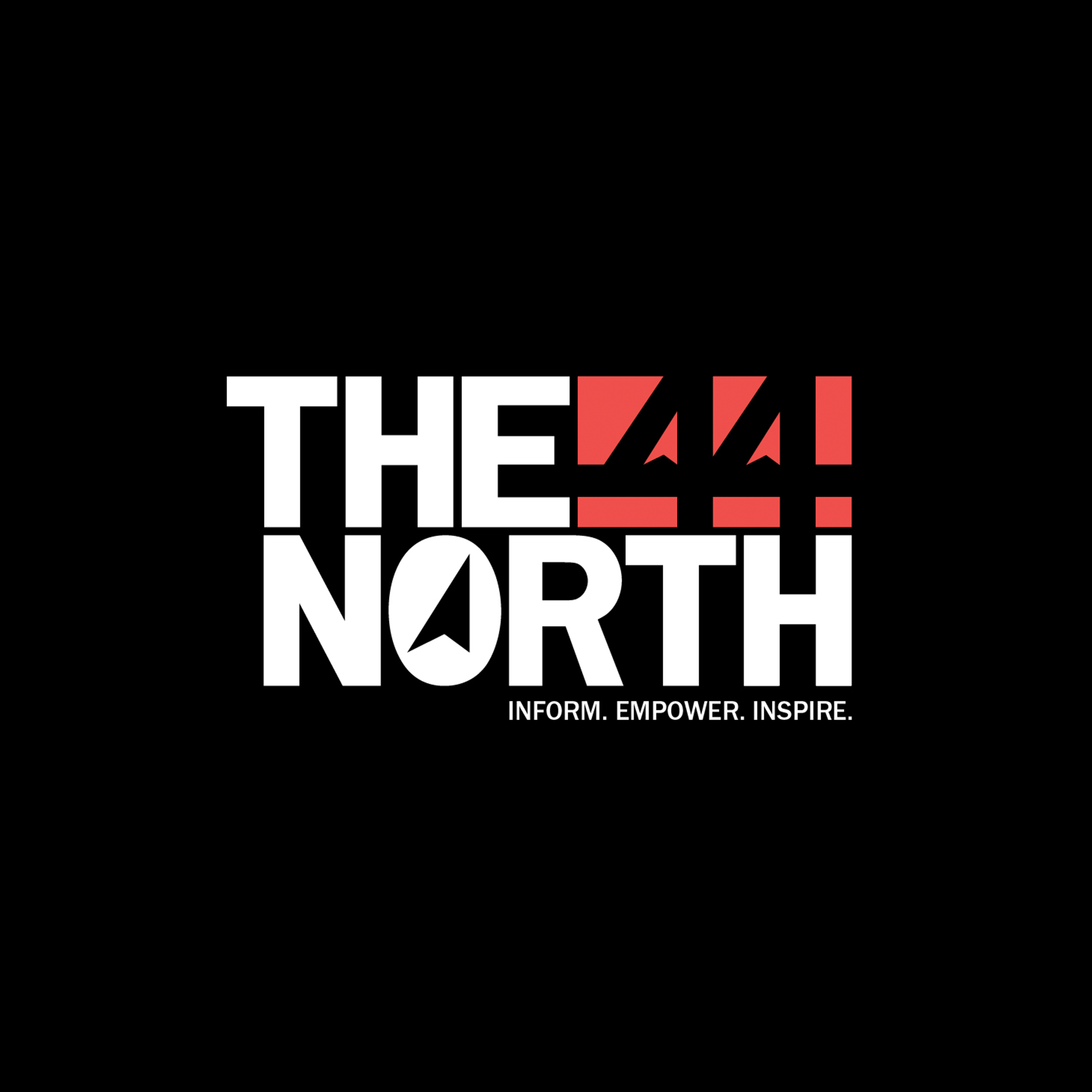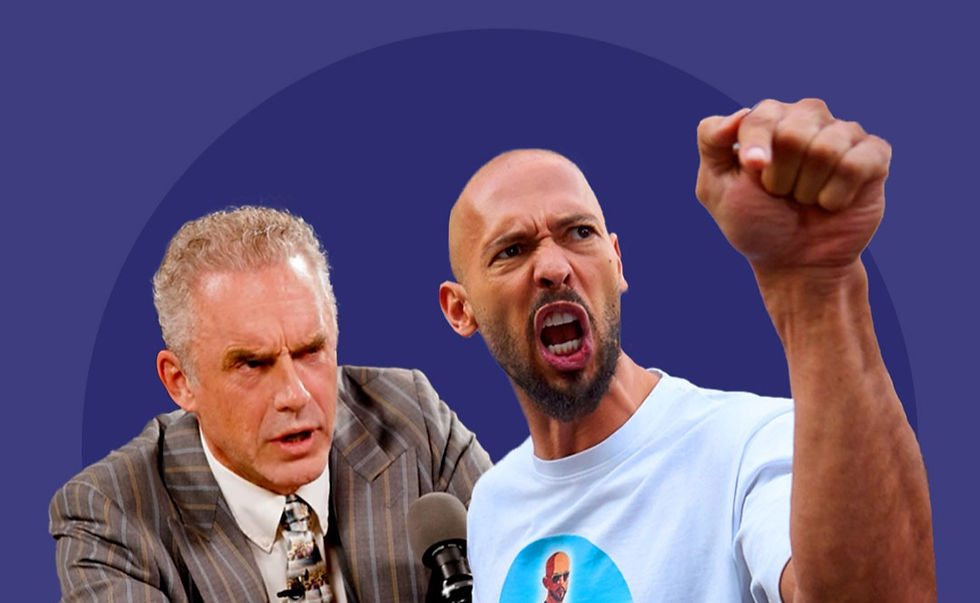- Jeff Perera

- 15 hours ago
- 5 min read
By Jeff Perera for The 44 North
Website: Higher Unlearning
IG: @jeffperera
Jeff Perera is a speaker, writer and facilitator who has delivered keynotes, talks and workshops for tens of thousands of people across North America and beyond about healthy versus harmful ideas of manhood, race and gender, masculinity, empathy-building, and men helping end gender-based violence.

"We can show one another that things can be different—things can be better. Healthier ideas of manhood don’t have to come at the expense of women and gender-expansive people… and they don’t have to come at our expense as men and boys either."
In this time we are living—where we hit the order button and immediately look at the tracking info because we want what we want and want it now—patience is scarce.
At the same time, many of us know that what matters most takes time to develop, build, grow, and nurture. The problem is: more and more of us feel we ain’t got time for all that, especially when our social media feeds are full of quick-fix solutions, crammed into 30-second video clips.
For many young men and boys today—desperately trying to find self-worth, self-identity, community, and connection—a quick fix seems like a no-brainer next to the long, hard road of self-work and self-care. What we must remember is that the need for answers and ways forward is more urgent and desperate for some young guys than others.
Truth #1: We Don’t Realize We’re Prey
Manosphere Influencers know this—seeking out young men struggling to stay afloat in the hostile waters online, hustling a way out of the darkness. They hawk male supremacy as the cure for what ails you, offering to teach you the ropes, and giving you the keys and tools to not only overcome but to dominate. Virtual father figures and big brothers who are always here for you (in a video or livestream) are at-the-ready to teach you how to ‘hunt.’ The problem is that these young men and boys don’t realize that they are prey.
It’s a bait and switch.
On the surface, these online male supremacist voices sell ‘freedom’ and suggest that people in progressive masculinity spaces and pro-feminist movements are just trying to restrain men. Skillfully playing the game of projection, they declare that social change types ‘just want to suppress and hold us back!’They will point and say:
“You can’t even tell a joke or have fun anymore!”
“They say that being a man is bad!”
“They don’t care about you and that you’re struggling, they just want you to care about women and trans people and everyone else BUT you!”
What they offer can feel like a lifejacket to these young guys who perceive that they are drowning in today’s stormy waters. Meanwhile, at the same time, they insist progressive spaces see you struggle but ‘just want to lecture you and make you soft and weak’.
Truth #2: Selling is not Saving
Manospshere influencers know that the moment someone is drowning is not the moment to teach them how to swim. This is the moment to ‘save them’. They offer a life jacket: community and connection with other young men also seeking dry solid ground; a quick short cut into identity, purpose and self-value.
Here’s the truth: I’m not selling you something to buy. I’m offering something for you to buy into.
Truth #3: Freedom is Not Restraint
Here’s another truth: The Bait and Switch they trick you with is Freedom vs. Restraint.
The manosphere is selling you Freedom, but what you end up with—what you end up in—is complete restraint.
When you think you’ve found identity, purpose, and community, you actually find yourself trapped in a hyper-limiting idea of who both you and then everyone else can be. The uniform of armour they offer you acts more like a straitjacket to keep you locked up within yourself.
‘A man only acts like this, likes these things, talks like this, dresses like this, feels like this, looks like this, is attracted to this…’
The beauty is: while they trap young guys in prisons made of harmful notions of what a man is or should be, the door is unlocked.
Voices inspiring young men to reject harmful notions of manhood aren’t trying to restrain guys, we are trying to help set each other free. True Freedom. We offer you a light to find your way ashore—a lighthouse to help you find a way back to yourself.We can show one another that things can be different—things can be better. Healthier ideas of manhood don’t have to come at the expense of women and gender-expansive people… and they don’t have to come at our expense as men and boys either.
Truth #4: In 'the Con', the First Person You Learn to Fool is Yourself
Another hard truth is that some young boys know manosphere influencers are full of it, but that’s what they admire about them: the act. They love how solid they are at the con, the grift. Most men are actors—we learn from an early age that we need to perform the version of ourselves that gains acceptance, respect, and even fear from our peers and others.
The pursuit of identity and worth via harmful portraits of manhood is all about the con, and the first person you learn to fool is yourself. And this is an act you must keep up your whole life—even when no one is in the room. At some point, this 24/7 performance will break you down.
The path forward as a guy isn’t easy, but you aren’t alone. People of all genders can support guys finding their way, but we need more men serving as lighthouses helping other men find their way in the dark waters of today.
Truth #5: To find the lighthouse we must believe we can be one
We can stop trying to fool others and ourselves. We can give each other permission, and offer ourselves the self-permission, to be authentic, to surface our full selves, and embrace our expansive humanity. Being a man can be about being assertive, as well as being in service of others. Being a man is about developing a truthful strength: to be what we believe and own the impact of our behaviour and actions. A life of continuously learning and unlearning. A model of possibility for one another. A lighthouse.
When we, as men, drop the performance and reject the con, we can create the space to embrace and value our humanity, and then also embrace and value the humanity of others. We help each other find a way out of the volatile and ruinous waters of the manosphere, and into a light we can become.
Further Reading
Readers can find a wealth of additional resources and links on the website, Higher Unlearning: A Discussion About Men and Masculinity.




